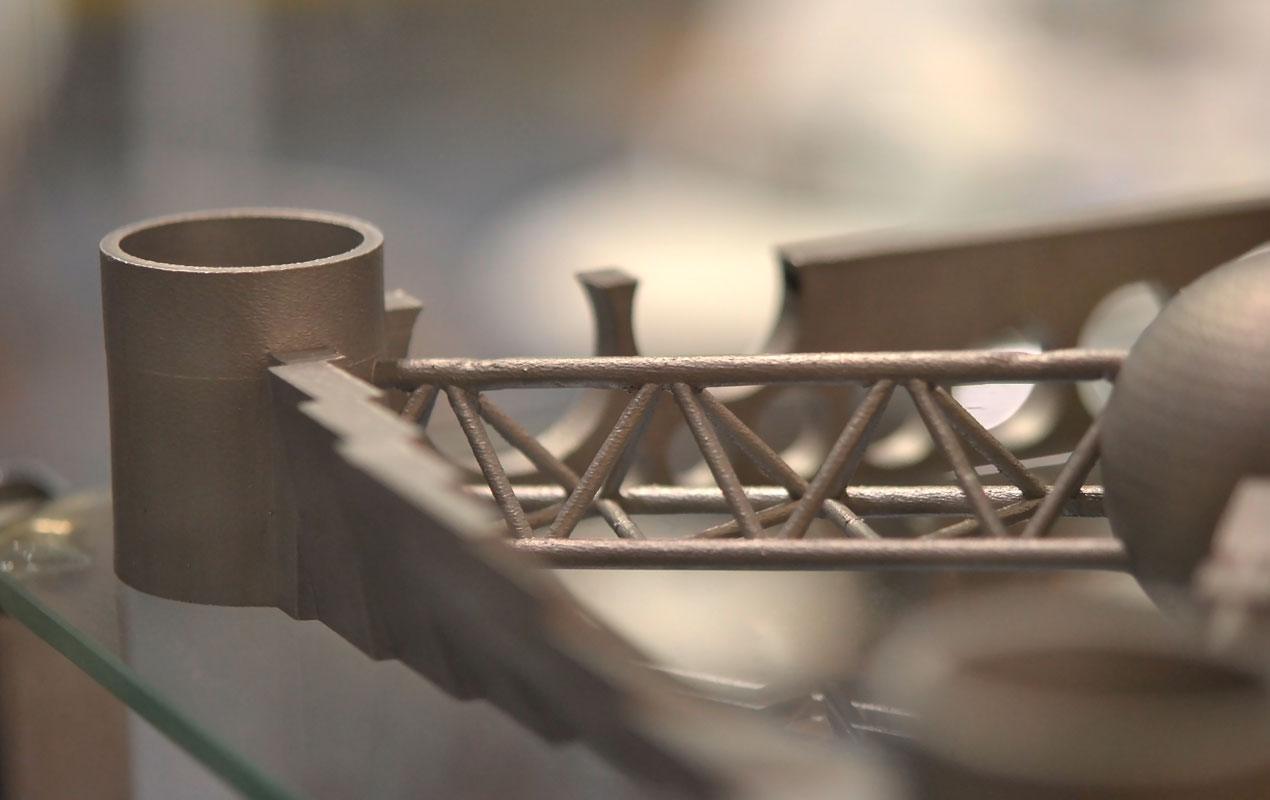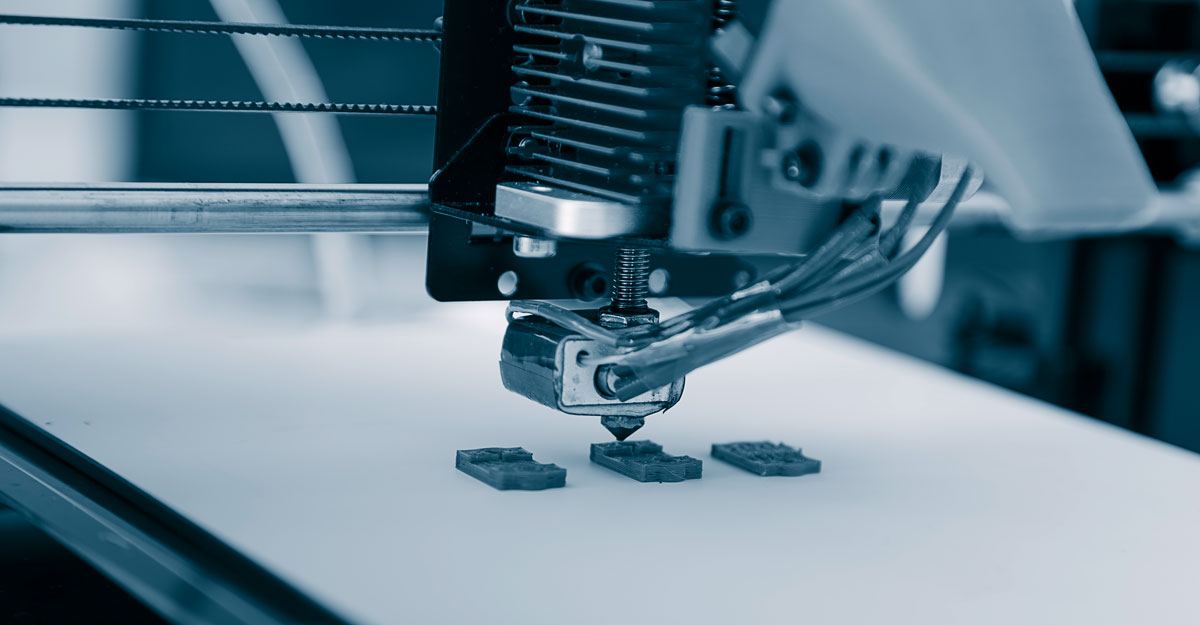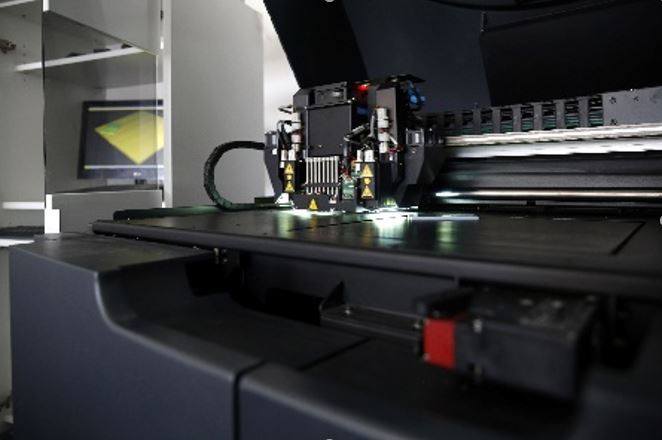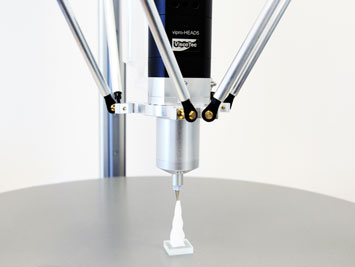Additive manufacturing processes are changing the industry
A comparison of 3D printing processes
There are some significant advantages in the production process: the first major benefit over traditional manufacturing processes, such as milling or turning, is the considerable lower material consumption, since the objects do not have to be made from a large block of material. In addition, by the generative construction, objects with particular properties or functions, such as for example, the combination of electrically conductive and non-conductive in a 3D printed component. Furthermore, the production for prototypes and small batches can be done much faster than before. Nevertheless, every additive manufacturing process also has disadvantages. Which method is right for each application depends on many different factors and needs to be well considered.
The first stages are the same for each process: as a preparatory production step, the digital 3D model of the object is sliced into individual layers with defined layer heights using suitable software (slicer) and stored in digital format. The digital data includes the exact blueprint for each layer of the objects. Depending on the method, the movement of the print heads, the height of the layers, the material quantities or the exposure times, are all specified. Based on this data, layered structure and 3D printing of the object takes place during additive manufacturing.
Nevertheless, it is about identifying which procedure is appropriate for the particular application. A comparison of the common additive manufacturing processes helps.
Stereolithography (STL / SLA)
Stereolithography (STL / SLA) was one of the first methods for producing 3D objects. In this case, a light-curing plastic (photopolymer) is cross-linked in layers and cured by means of a light source. The most widely used stereolithography process is whereby a base plate is slowly lowered in a photopolymer vat. For each new layer, the areas to be cross-linked are solidified due to light exposure from above. Light exposure usually comes from a laser light, which is deflected by a movable mirror. After complete light exposure of a layer, the plate is lowered according to the height of the individual layers. Finally, the object is removed from the vat and cleaned of excess photopolymer residues prior to use.
Currently the fastest stereolithography methods use a base plate that moves upwards. In this way, the object adheres to the underside of the carrier. The cross-linking again occurs due to light exposure, which is focused on the layer through the transparent bottom of the liquid vat.
Selective Laser Sintering (SLS) / Selective Laser Melting (SLM)
Both laser sintering and laser melting are 3D printing techniques in which individual layers of a metal or plastic powder are sequentially applied and fused together by high power lasers. After each 3D printed layer has been printed, the bottom plate is lowered by the layer height and a new powder is applied with a squeegee. In laser sintering (SLS), the particles are melted by the laser, while laser melting (SLM) results in a complete fusion of the materials.
In both processes, the powder around the object serves as a support material, which allows a high amount of design flexibility. Therefore, any overhangs do not require supporting structures. Powders in the form of various plastics (e.g., polyamide or polystyrene) and also metals (e.g., aluminium, tool steel or titanium) are suitable.
Fused Filament Fabrication (FFF)
In the fused filament fabrication process, a meltable “plastic thread”, the so-called filament, is melted in a print head and applied to a base plate through a dispensing nozzle. From the dispensing nozzle, individual melt paths are deposited always in X and Y directions, which immediately cool and solidify. Each path is placed side by side to form a layer of the 3D print object. After each layer has been printed, the base plate is lowered by the layer height in Z direction or, in the case of printers with a fixed construction platform, the dosing unit is raised by the layer height. A special feature here are so-called delta printers, whereby the print head builds up freely on a stationary base plate.
Material Jetting (MJ)
Material jetting (MJ) is an additive manufacturing process in which liquid material is applied without making contact with the carrier plate by means of a jet nozzle and can be moved in X and Y directions. Here, individual droplets of material are quickly deposited on the carrier and combine to form a layer. This process is reminiscent of a conventional inkjet printer, whereby the liquids have a higher viscosity. The cross-linking usually takes place after each jetted layer has been printed by means of UV light. By using multiple printheads, e.g. different colors or different strengths (soft and hard areas) can also be implemented. In order to achieve overhangs, support material is required, which is removed afterwards. MJ parts are used, e.g. in the medical field as surgical templates or drilling templates for the dental sector.
Liquid Additive Manufacturing (LAM)
Liquid Additive Manufacturing (LAM) is also an additive manufacturing process, but the objects are built directly onto a base plate with a printhead. The special feature of this process are the printing materials: The individual paths consist of (highly) viscous liquids or pastes, which are deposited on a base plate with a precision print head and built up layer by layer. A variety of printing materials can therefore be used: from silicone and polyurethane to industrial grease and ceramic pastes to bone marrow and sugar mass.
The materials can be both 1- and 2-component. The solidification of the material is carried out in different ways, e.g. by humidity, UV light, heat or 2-component materials according to a material-dependent curing time (also called pot life). Thanks to the volumetric dosing technology in the print head – the endless piston principle – there is a direct proportionality of the motor speed to the amount of material.
The dosage can therefore be carried out exactly according to the software specifications. As a result, for example, the process speeds during 3D printing also vary without the material paths changing. A major advantage of the LAM process is the material cross-linking at the molecular level, in which the individual material paths are continuously cross-linked and not only connected to one another by its edges. Therefore, objects with very good mechanical strength can be produced in both X and Y directions, as well as in the Z direction. In adopting the LAM method, the same hardware and software components can be used as for the FFF method, which saves development resources. Since the materials are pasty, overhangs are only possible with supporting structures or a second support material. The surface finish is similar to that of the FFF method.
A conclusion
Overall, it shows that all additive manufacturing processes have their specific advantages and disadvantages. After defining the necessary requirements of components and materials, the appropriate 3D printing process can be selected. For example, a laser-sintered produced component prioritises its strength, whereas the surface quality is the main advantage of a stereolithography printed part. The variety of possible materials, speeds and accuracies provides the industry with a good selection for solving individual tasks. The applications in the industry and the market figures of sold equipment prove that the initial pure manufacturing of prototypes has become more and more industrial additive manufacturing production. The market for industrial 3D printing, be it in the automotive industry, aerospace or even in the electrical industry, has great potential and every process with its individual properties, will find an application.
In LAM technology we are seeing a useful addition to common additive manufacturing processes. Due to the multitude of different liquid materials and the resulting diverse properties, the 3D printing market has another opportunity to produce individual objects based upon customer-specific requirements.





